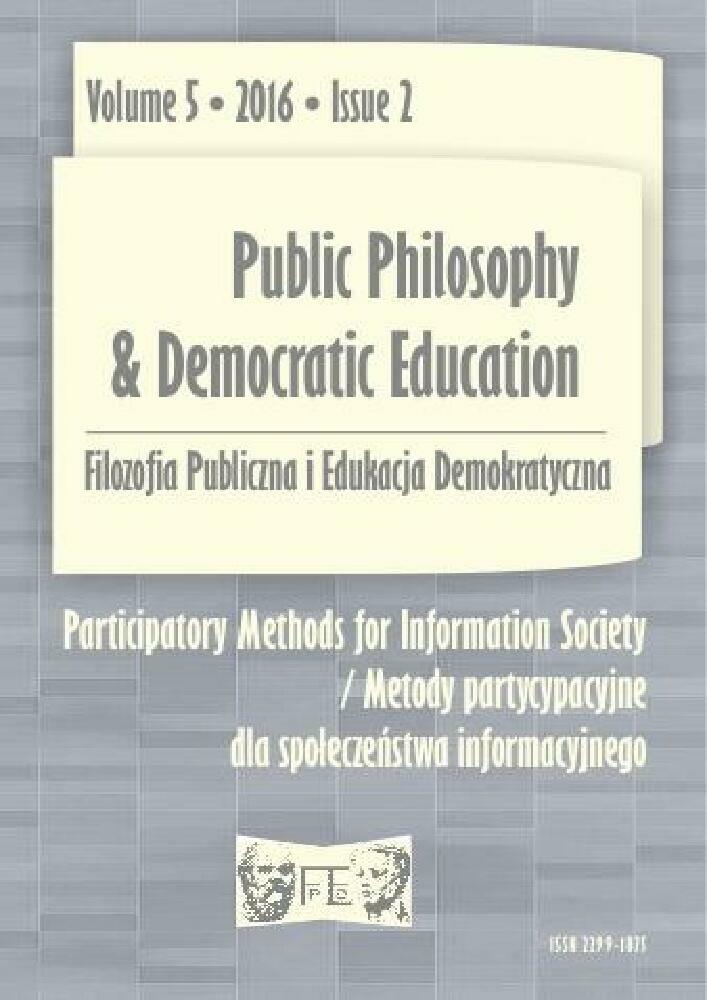Abstrakt
The paper concerns the role of open innovation within public R&D&I programmes. The history of innovation management shows that the methods used to organize research and development work have evolved towards open innovation model. The first, original, concept of “open innovation” (Chesbrough) has been coined to explain how companies diversify technology sourcing and commercialization methods, and thus represents a perspective of industry. On the other hand, Open Innovation 2.0 approach emerged in the context of policy-making and displays features characteristic of innovation systems theory. It enables a more indepth analysis of interactions between different types of actors involved in innovation process and complex R&D ecosystems.
Bibliografia
Caracostas, P., Muldur, U. (2001). The emergence of a new European Union research and innovation policy. In: P. Larédo, P. Mustar (Eds.), Research and innovation policies in the new global economy. An international comparative analysis (pp. 157-204).
Cheltenham–Northampton: Edward Elgar Publishing.
Chesbrough, H. (2003a). Open innovation: The new imperative for creating and profiting from technology. Boston: Harvard Business Press.
Chesbrough, H. (2003b). The Era of Open Innovation. Sloan Management Review, 44(3), 35-41.
Curley, M. (2015). The Evolution of Open Innovation. Journal of Innovation Management, 3(2), 9-16.
Curley, M., Salmelin, B. (2013). Open Innovation 2.0: A New Paradigm. White Paper. The Open Innovation Strategy and Policy Group, 1-12.
Du Preez, N.D., Louw, L., Essmann, H. (2006). An innovation process model for improving innovation capability. Journal of High Technology Management Research, 1-24.
Etzkowitz, H. (2008). The Triple Helix. University–Industry–Government. Innovation in Action. New York–London: Routledge.
Freeman, C. (1988). Japan: A new national innovation system? In: G. Dosi, C. Freeman, R.R. Nelson, G. Silverberg, L. Soete (Eds.), Technology and Economy Theory (pp. 331-348). London: Pinter.
Granstrand, O., Sjölander, S. (1990). Managing innovation in multitechnology corporations. Research Policy, 19(1), 35-60.
Greenhalgh, C., Rogers, M. (2010). Innovation, intellectual property, and economic growth. Princeton: Princeton University Press.
Gudowsky, N., Peissl, W. (2016). Human centred science and technology—transdisciplinary foresight and co-creation as tools for active needs-based innovation governance. European Journal of Futures Research, 4(1), 1-10.
Lundvall, B.Å. (1985). The Learning Economy and the Economics of Hope. London-New York: Anthem Press.
Niosi, J. (1999). Fourth-generation R&D: From linear models to flexible innovation. Journal of Business Research, 45(2), 111-117.
Nobelius, D. (2004). Towards the sixth generation of R&D management. International Journal of Project Management, 22(5), 369-375.
Nonaka, I., Takeuchi, H. (1986). New New Product Development Game. Harvard Business Review, 64, 137-146.
Normann, R., Ramirez, R. (1993). From Value Chain to Value Constellation: Designing Interactive Strategy. Harvard Business Review, 71(4), 65-77.
OECD (2002). Frascati Manual. Proposed standard practice for surveys on research and experimental development. Paris: Organisation for Economic Co-Operation and Development Publishing.
OECD (2005). Oslo Manual. Guidelines for collecting and interpreting innovation data. Organisation for Economic Co-Operation and Development Publishing: Paris.
OECD (2008). Open Innovation in Global Networks. Paris: Organisation for Economic Co-Operation and Development Publishing.
Rogers, D.M.A. (1996). The challenge of fifth generation R&D. Research-Technology Management, 39(4), 33-41.
Rothwell, R. (1994). Towards the fifth-generation innovation process. International marketing review, 11(1), 7-31.
Roussel, P.A., Saad, K.N., Erickson, T.J. (1991). Third generation R&D: managing the link to corporate strategy. Boston: Harvard Business School Press.
Salmelin, B. (2013). The Horizon 2020 framework and Open Innovation Ecosystems. Journal of Innovation Management, 1(2), 4-9.
Schuch, K. (1998). The emergence of the European Innovation System and its impact on the Austrian S&T system. In: Proceedings from the 38th Congress of the European Regional Science Association (vol. 28).
Simard, C., West, J. (2006). Knowledge Networks and the Geographic Locus of Innovation. In: H. Chesbrough, W. Vanhaverbeke, J. West (Eds.), Open Innovation. Researching a New
Paradigm (pp. 220-240). Oxford: Oxford University Press. Simpson, T.W. (2004). Product platform design and customization: Status and promise. Artificial intelligence for Engineering design, analysis and manufacturing, 18(1), 3-20.
Vanhaverbeke, W. (2017). Managing Open Innovation in SMEs. Cambridge: Cambridge University Press.
West, J., Vanhaverbeke, W., Chesbrough, H. (2006). Open Innovation: A Research Agenda. In: H. Chesbrough, W. Vanhaverbeke, J. West (Eds.), Open Innovation. Researching a New Paradigm (pp. 285-307). Oxford: Oxford University Press.
Licencja
Prawa autorskie (c) Autorzy zachowują prawa autorskie i prawa do publikacji swoich artykułów w tym czasopiśmie, przyznając czasopismu prawo do ich rozpowszechniania na warunkach CC BY-NC-ND 4.0
